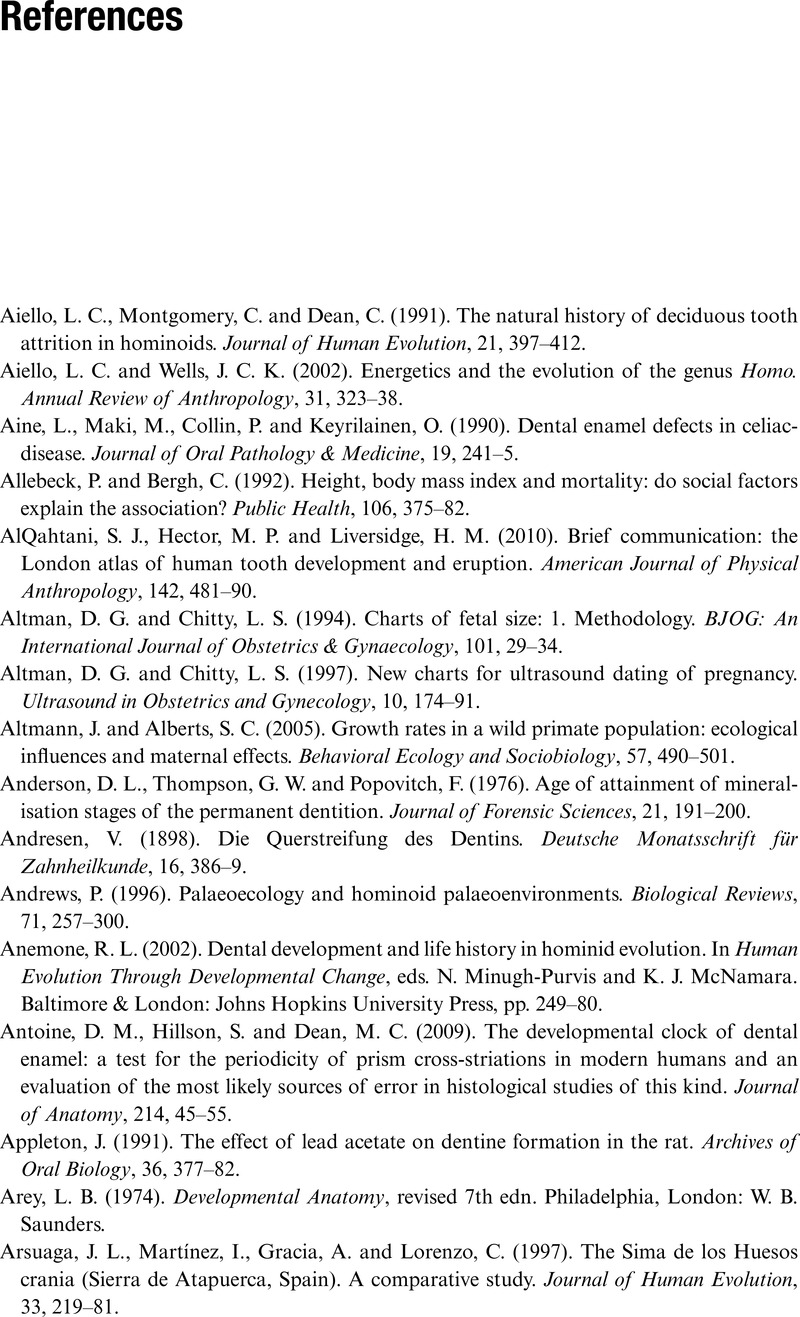Book contents
- Frontmatter
- Contents
- Acknowledgements
- 1 Why development and why teeth?
- 2 Development schedule, body size and brain size
- 3 How teeth grow in living primates
- 4 Microscopic markers of growth in dental tissues
- 5 Building dental development sequences
- 6 Human evolution, pace of development and life history
- 7 Dental markers of disease and malnutrition
- 8 Health, stress and evolution: case studies in bioarchaeology and palaeoanthropology
- 9 Conclusions
- Appendix A Tables
- Appendix B Technical information
- References
- Index
- References
References
Published online by Cambridge University Press: 05 June 2014
- Frontmatter
- Contents
- Acknowledgements
- 1 Why development and why teeth?
- 2 Development schedule, body size and brain size
- 3 How teeth grow in living primates
- 4 Microscopic markers of growth in dental tissues
- 5 Building dental development sequences
- 6 Human evolution, pace of development and life history
- 7 Dental markers of disease and malnutrition
- 8 Health, stress and evolution: case studies in bioarchaeology and palaeoanthropology
- 9 Conclusions
- Appendix A Tables
- Appendix B Technical information
- References
- Index
- References
Summary

- Type
- Chapter
- Information
- Tooth Development in Human Evolution and Bioarchaeology , pp. 273 - 301Publisher: Cambridge University PressPrint publication year: 2014



